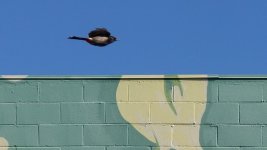ptpdprinter
Mentor
I think you have to understand that Leica does not make the specs of its cameras for the majority, but for those that truly need it. Then it trickles down to the majority who have conversations like this one.
I view it a little more prosaically. I think they just improve the specs to sell more cameras. Those who truly need the improved specs will buy the new camera. Those who don't truly need the improved specs will buy the new camera too. Those who don't truly need the improved specs will probably buy the new camera before those who truly need the improved specs because those who truly need the improved specs haven't fully depreciated their now obsolete cameras. Next stop: 80MP. And maybe a thumb rest that looks suspiciously like a film advance lever for those who truly need it. Besides, the camera manufacturers can no longer get the parts to continue making their current model because the life cycle of the parts is so short, so they have to introduce a new model. Which is handy because the camera repair guys can't get the old parts either, so if the camera breaks, the photographer has to buy a new camera whether he truly needs the improved specs or not. Things are a little different for vacuum cleaners. No one buys a new vacuum cleaner because the new model has improved specs. Maybe there is a lesson in there somewhere. One thing is certain: digital photography saved Leica. Their previous business model of selling a single camera to a photographer that never needed to be replaced because it is already perfect wasn't sustainable in the 21st century.
robert blu
quiet photographer
I think you have to understand that Leica does not make the specs of its cameras for the majority, but for those that truly need it. Then it trickles down to the majority who have conversations like this one.
Yes, it makes sense. And it is niuce to have something to discuss !
JeffS7444
Well-known
I understand with 60 MP it is possible to make very large prints. I'm curious to know how many among us or among Leica users print such a large size to need 60 MP. And yes,of course I understand the benefit of the cropping factor.
Personally I like small prints because more intimate. But this is just me, not so important in a wider viewand a different topic.
If you are going to omit the optical low pass filter, ideally you want a sensor which can out-resolve your best lenses. And in the case of the Sony A7R4, this works magnificently, with aliasing artifacts only being a minor concern for me. With Leica M8 and M9, this was much more troublesome! Aside from higher initial cost, I have found no disadvantages to the higher resolution sensor, even though my own print sizes are small.
And sometimes the extra resolution allows me to discover scenes-within-scenes which I did not notice at the time:


sojournerphoto
Mentor
Put another way- 9528 pixels/ 35.8mm on the long side, 2 pixels per line, you need a lens that resolves 133 line pairs per millimeter to match this sensor.
The lens itself is the anti-aliasing filter.
I do like oversampling - although some lenses do have contrast left at 133lp/m - e.g. Zeiss ZM 2.8/25 is supposed to diffraction limited at f4.
As an aside, it will let you put all sorts of detail into Spur Orthopan or Adox CMS20. Getting that detail off again may be challenging if course - I am confident my S1r and Sigma macro won’t get all of it.
sojournerphoto
Mentor
I understand with 60 MP it is possible to make very large prints. I'm curious to know how many among us or among Leica users print such a large size to need 60 MP. And yes,of course I understand the benefit of the cropping factor.
Personally I like small prints because more intimate. But this is just me, not so important in a wider viewand a different topic.
I agree. I almost always prefer small prints that I can hold. I have a little print on the mantelpiece of my wife and dog sitting on a hillside. The image is a full 24Mp frame printed at about 3.6 x 2.4 inches. I don’t mind the excess of pixels. In fact I often like small prints made from high resolution files. The same applies to film scans - I prefer a high res scan even for small prints.
but as you say, they are more intimate.
I miss my Tektronix Phaser IISDx Dye Sub printer. The colors were amazing, and (almost) 25 years later the prints look just as good.
Share:

